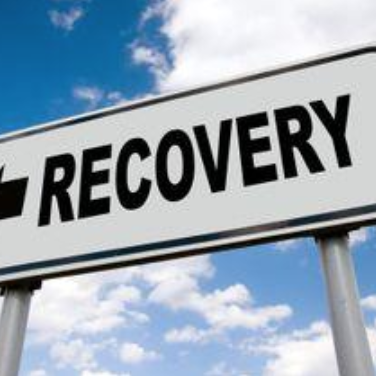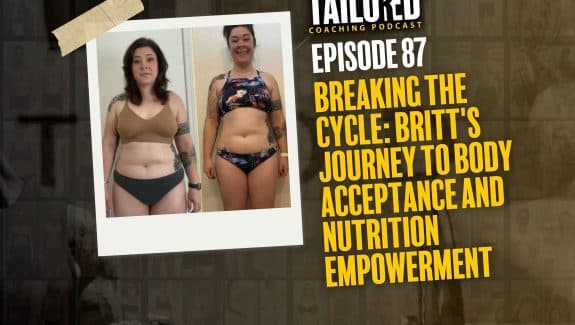 When it comes to training there are always some aspects that people leave out or forget to put an emphasis on. This is usually 1 of 2 things, nutrition or recovery. People never forget to train because that’s the first thing that comes to mind when trying to get in shape. I have written about nutrition and diet multiple times, as have many other fitness writers so I think it is important for me to give a post about the other important factor of getting great results.
When it comes to training there are always some aspects that people leave out or forget to put an emphasis on. This is usually 1 of 2 things, nutrition or recovery. People never forget to train because that’s the first thing that comes to mind when trying to get in shape. I have written about nutrition and diet multiple times, as have many other fitness writers so I think it is important for me to give a post about the other important factor of getting great results.
Recovery can be performed in so many different ways from specific therapy to simply just taking a break, but the most important thing is just getting the recovery done. There are very advanced ways to recover that can give you almost immediate results, but how you get the recovery isn’t always most important but simply getting some form of recovery is.
Many people get so anxious to lose weight or build muscle that they smash their body’s on a daily basis without giving it a break. I’ve seen many cases of over-training and have even done it to myself before I was smart enough to realize what I was doing. The truth of the matter is that when your body is recovering, it’s actually the time when you’re getting most of your gains and results. While training you’re putting a great load of stress onto your body and this calls for serious recovery so that it can repair and restore itself to a bigger, stronger, and more efficient system. The exact thing that leads to over-training is also exactly what leads to the results you’re chasing after, which can confuse people. When do you stop or slow down? How many days per week do you train? For how many consecutive weeks? These are all questions that get asked on a regular basis and I have the answers for you.
- When to slow down: This depends on the volume and intensity of your training program, but also how much your body can handle. If you are performing heavy lifts to increase strength or performing explosive exercises on a regular basis than you will need to “de-load” (take a break) more often to give your Central Nervous System a bit of a rest. If you’re performing more metabolic training then strength and not training more than 3-4 times a week, you will not need a de-load as often. De-loads are usually performed every 4-8 weeks, which means if your training very hard and consistently you should probably de-load after the 3rd week of heavy lifting. If you’re not in this category but you do train on a consistent weekly basis, then you should take a break at the 2 month marker. Now taking a break does not mean “Don’t train”, what it does mean is lighten up the load your body is enduring. Drop some sets, reps, or weight and just perform the exercises properly. You should leave the gym thinking you could’ve done a little more, but still received a great workout.
- Days per week of lifting: Again this depends on a few things like what you can handle without over training, how much sleep you are getting, and what your goal is. This could be anywhere from 2-6 times a week, but usually if you would like to receive good results you should be training at least 3 times per week. Training 2 times per week will give you some good results to improve health but it will not cut it if you want drastic fat loss or muscle gain results. I recommend 3 days of weight/strength training per week with 1 day between each day for rest. This doesn’t mean you have to be sedentary between these days because there are ways to perform whats called “Active Recovery”. This could be different types of cardio or conditioning that do not put the type of stress on your body that strength training does but still allow you to burn fat and build muscle. Bodyweight exercises are great for this, especially in circuit form such as boot camp training.
- Consecutive weeks of training: This can usually be year round, but it doesn’t hurt to take on week completely off per year. But back to my first bullet on slowing down, if you are de-loading properly then you will not need to take a week completely off because your body will be in the shape it needs to be to handle this type of lifestyle.
This all leads back to the fact that you will need proper recovery if you plan on living this type of lifestyle and plan to get in the shape you would like to be in. Recovery comes down to a few factors which are to eliminate your imbalances, correct the deficiencies occurring from training, stimulate the nervous system, and result in reducing stress levels throughout the body. As said before there are many ways of performing recovery, so let’s go through these different processes.
- Deep Tissue Therapy- This is in my opinion the best type of recovery out there simply because anybody has access to it. You can manual perform this on yourself or have someone like a chiropractor or masseuse to help you with it also. The way it is performed is essentially digging into your tissue to break down any adhesions caused from the stress you’ve put your muscles and body under while training. You can use a foam roller, a lacrosse ball (or any small ball that is painfully hard), tiger tails (tools that look like rolling pins), or have somebody manually dig in there with their hands, elbows, fingers, or anything else they can inflict the wonderful pain onto you with. As you can see by my writing, it hurts a little bit but in the end is so worth it. To give you a better understanding of what is happening I will explain what your tissue is and looks like. Everyone has layers of tissue that overlap the muscles called fascia, this tissue is essentially one big piece that wraps around your whole body from head to toe. What that means is that it’s all connected and you will need to take care of this tissue or you will not move or be able to train efficiently. The best and most efficient way to take care of this is going straight to the source of pain, stiffness, or immobility. In most cases you can literally feel the knot under your skin which tells you, you’re hitting the right spot. When performing deep tissue therapy you are actually stretching and giving the muscles micro-tears which break apart the adhesions, but result in the muscle quickly repairing stronger, longer and more relaxed for flexibility. It will also warm up tissue fluid and release excess fluid out of the tissue, which releases pressure on the nerves and makes your muscles more relaxed. But remember, this isn’t a “Feel Good” massage. This shit hurts! But I will say that this massage does have a happy ending… your muscles feel amazing afterwards!
- Cold and/or Hot Water Immersion- This is another excellent strategy for recovery that most people know of but usually perform poorly. Everyone’s heard of ice baths or saunas, and they both work great for recovery but it comes down to how you use these strategies to get great recovery results. When it comes to ice baths people usually jump in a freezing cold bath and just sit as long as they can. Well what they don’t realize is sitting any longer than 5 minutes might actually have the opposite effect of recovery and actually put your body into a shock that stops it from relaxing and recovering. The most effective cycle for ice baths is anywhere from 1-3 minutes, repeated 2-5 times. This lets you reduce body temperature, decrease inflammation within the tissue, and causes a sympathetic response. But once you have been in any longer than 3-5 minutes it can do just the opposite and reset what you have just accomplished in the ice bath. Another great recovery method is heat immersion, which can be performed in hot tubs, dry heat rooms, or high heat saunas. When it comes to heat immersion it is best resulted when done for 5-25 minutes, rather than the short time period in the ice bath. This heat therapy actually decreases sympathetic response and increases parasympathetic responses, it also can decrease inflammation within tissue, relax you physically and mentally, and stimulates changes within the body. Both of these therapies have the best results when performed with full body immersion, so don’t just dip your feet in the water! It is sometimes hard to tell if you need sympathetic recovery or parasympathetic therapy, but it can be most beneficial performing a combination both types. It has been found that being in the high heat for the time needed and then immediately jumping in the ice bath for the 1-3 minutes, favors the best results when attempting to decrease inflammation and increase blood flow into the muscles. This cycle can be repeated 2-5 times for best results, but it is also important to recover a regular body temperature after each cycle. Meaning you would sit in a lukewarm bath or pool, wrap up in a blanket, or sit in a hot tub of not overly high heat. My favorite place to perform this is at Banya 5, which is located in the heart of Seattle and if you’re in this area I highly suggest you check it out.
- Dry Needling- This is a very new therapy method just arising in the industry but I must say I’ve grown to love it and will be receiving this therapy on a regular basis. Few practitioners are out there but they usually are physical therapists and if you can find one, I highly recommend it. This type of therapy is similar to deep tissue work but at a much deeper level that a foam roller or any other tool used manually can reach. They have found it to release tension in the muscle which rapidly decreases muscular fatigue and sourness, but also can release pain from serious injuries. I have personally used this therapy for both muscle fatigue and chronic pain and received amazing results from it. When you foam roll your tearing away knots in the tissue on the top layer, but there’s many layers. This is one of the only ways to truly dig deep and get into the deepest layer of muscle tissue that can be knotted up or inflamed. Because this is a very new type of therapy and I do not think I know enough behind the science to give it complete justice, I will send you the way of my PT’s who perform this on me. Click this link for more info on it and if you live in the Seattle area check these guys out ASAP! You will not regret visiting the Doctors of Physical Therapy.
Now there are other ways for performing recovery that also work, but these are my top picks without a doubt. But you must remember that there are also many other factors when it comes to recovery such as nutrition, sleep, active recovery, environmental change, etc. You cannot recover properly if your not intaking enough calories or the right type of food. To me this is obvious but too many it can be confusing, so make sure you’re getting the amount of calories you need from the right sources at all times. Sleep can be one of the biggest ones and I run into many clients who have a problem with this. Sometimes its hard to get the full 6-8 hours you need every single night because of work, stress, kids, or training. But the important thing is finding the time to get it in, even if that means taking naps. Sleep is the prime time for your body to truly recovery and take a break from being active. Active recovery is a fancy term for saying, “Take a break from the big weights”. This doesn’t mean just sit on your ass all day, it means train light and just be active. This will let your body still burn calories and build muscles like you want, but it also gives it a slight break from the stressful load you constantly put onto it during strength training. Environmental change is another way of saying, “Vacation”. Studies show that just getting away from your usual routine or getting out-of-town for a few days can physically and mentally release a lot of stress, which is perfect for a break from training. You can also put this and active recovery together for even better results. Go camping and hike while your out there, this will be relaxing but you wont need to stop burning calories and working your muscular system either.
At the end of the day just know how important recovery is, because without it you will not receive the results you’re looking for and that’s a fact.






















































































































































































































































































































































































































































































